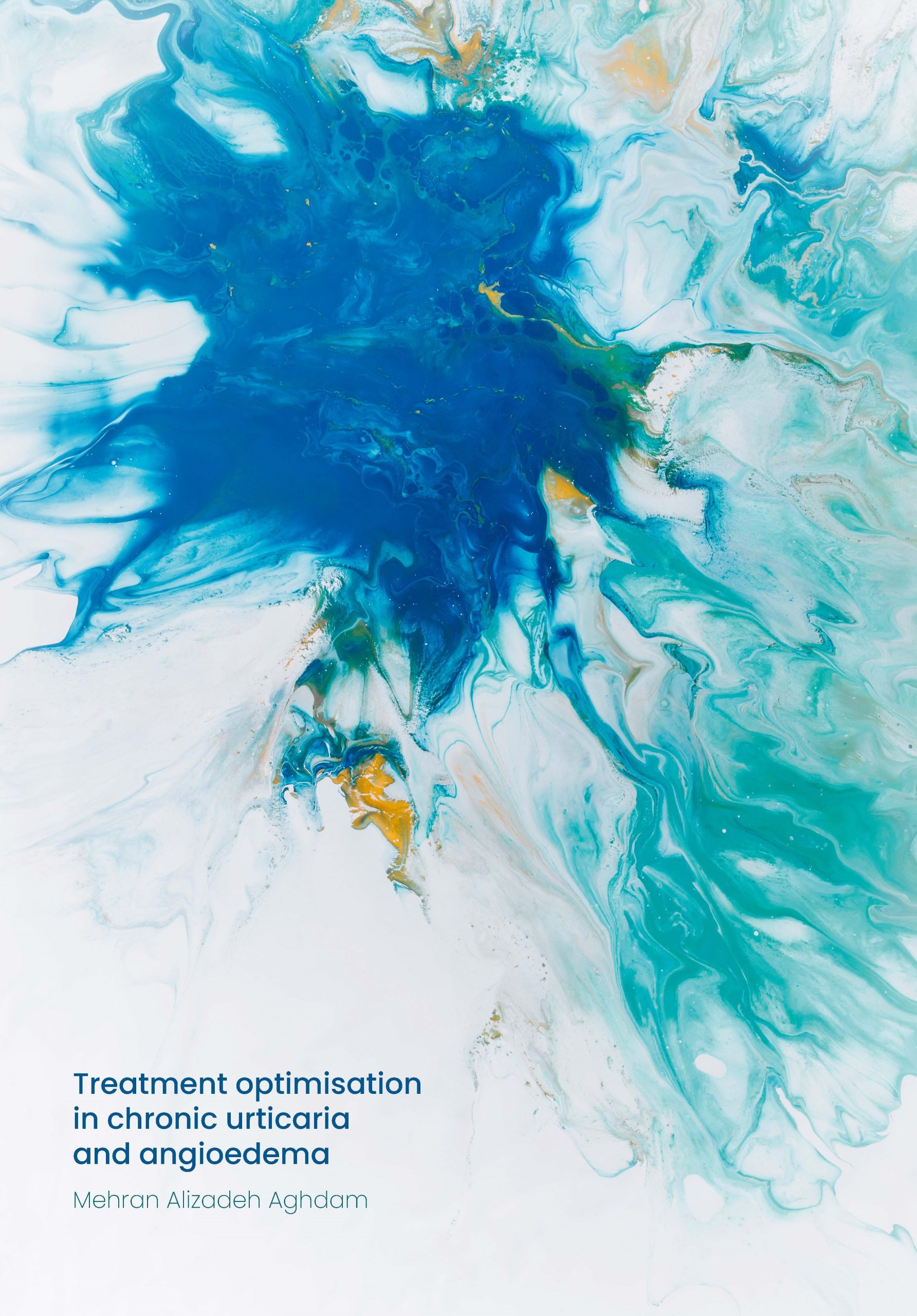Treatment of chronic urticaria (including angioedema) with omalizumab is effective and safe in a real world setting. As a result, in the majority of patients, omalizumab treatmentintervals can be extended or treatment can even be discontinued at all. The majority of patient with insufficient treatment response to standard doses of omalizumab benefitted from high dose treatment. These were the main conclusions of the PhD research of Mehran Alizadeh Aghdam (UMC Utrecht) who defended his thesis on October 31 at Utrecht University.
Chronic urticaria (CU) is characterized by a severe skin rash with red, itchy bumps, which lasts for at least six weeks and may be accompanied by angioedema (a deep swelling of the the skin and/or mucosa). As a result, patients with CU have a strongly impaired quality of life. In randomized controlled studies, treatment with the anti-IgE monoclonal antibody omalizumab (Xolair) was proven a safe and efficacious treatment option in patients with CU not responding adequately to antihistamines. However, daily practice data are limited to populations with short follow-up periods or focus only on effectiveness or side-effects. In a drug-survival daily practice study, Mehran Alizadeh Aghdam and co-workers investigated the long-term performance of omalizumab in CU patients in whom antihistamines did not provide sufficient alleviation of symptoms. Alizadeh Aghram performed his research at the Department of Dermatology & Allergology at UMC Utrecht, a recognized international CU Center of Reference and Excellence within the European GAL²EN Network.
Using drug-survival analysis, Mehran Alizadeh Aghdam and co-workers found that treatment with omalizumab in 659 adult patients for a period of up to 8 years was highly efficacious. From all patients starting with omalizumab, the overall survival rates decreased from 76 percent to 37 percent over the first 5 years. Treatment was mainly discontinued due to well-controlled disease. Ineffectiveness or side effects were rare reasons for discontinuation, demonstrating the high effectiveness and safety of omalizumab in the treatment of CU in daily practice. A similar effect was observed in a smaller study with 38 pediatric CU patients. They also showed that in patients with a good or complete response, omalizumab treatment intervals can be extended from the standard of 4 weeks to 7 weeks (median) or longer. In patients with an insufficient treatment response to omalizumab with the standard dose of 300 mg, a dose increase up to 600 mg led to a significant improvement in 61 percent of patients.
The exact pathogenic mechanism of CU and the exact mechanism of action of omalizumab remain unknown. The researchers found that high-affinity IgE receptor (FcεRI) expression on basophils (a certain type of immune cell) decreased significantly after omalizumab administration, while anti-IgE-induced degranulation increased significantly. Additionally, the researchers demonstrated complement component C4d deposition in affected skin and elevated blood levels of C5a in CU patients suggesting a role for complement activation in the pathogenesis of CU. None of the findings regarding the complement system or FcεRI expression, however, could be related to omalizumab treatment response.
Mehran Alizadah Aghdam and co-workers also showed that angioedema, with or without skin rash, is highly manageable in the majority of patients without prophylactic therapy or with antihistamine monotherapy. Fourteen percent required add-on treatment with omalizumab or other drugs. In patients with angioedema without skin rash, treatment with a recombinant human C1 esterase inhibitor (Ruconest) might be a treatment option when omalizumab has failed.
These findings offer new insights into the pathogenesis and management of CU, and suggests possibilities for a more personalized treatment approach.
Mehran Alizadeh Aghdam defended his PhD thesis on October 31, 2023 at Utrecht University. The title of his thesis was “Treatment optimalization in chronic urticaria and angioedema.” Supervisor was prof. André Knulst MD PhD and co-supervisor was dr. Heike Röckmann MD PhD (both Department of Dermatology & Allergology, UMC Utrecht). In June 2022, Mehran started his training to become a dermatologist at UMC Utrecht.

